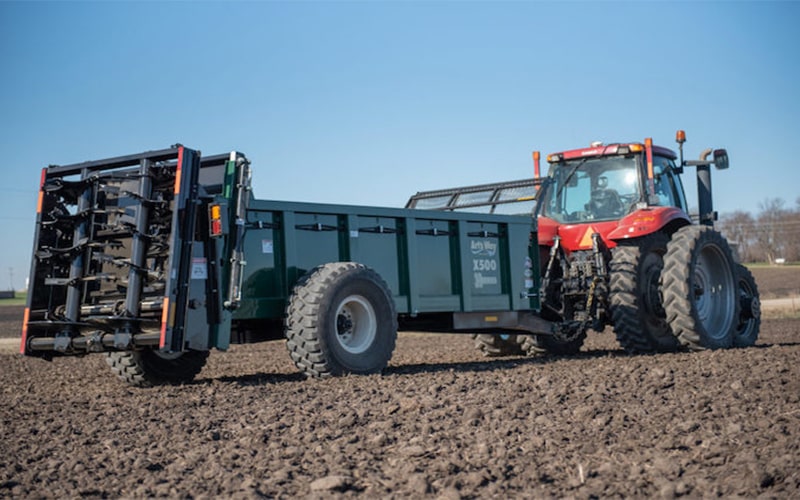Just like most work done on the farm, the spreading of manure to boost crop production is done with a tool known as a spreader. A spreader is a farm tool that helps farmers uniformly, and evenly apply manure over a farm field. The tool’s right application promotes the efficient use of manure as a source of crop fertility while also preventing the occurrence of nutrient over-application which may harm the soil as well as the environment. Manure spreaders come in various forms and operational methods. These forms include the following:
1. Solid manure machines
used to spread manure across the soil surface.
2. Liquid manure machines
used to apply manure across the soil surface.
3. Liquid injection machines
used to inject manure into the soil, below its surface.
SOLID MANURE SYSTEMS
Solid manure refers to manure with greater than 20% solids by weight. Solid manure and semi-solid manures are usually controlled by tractor-pulled box spreaders. These spreaders have varying capacities, ranging from two to twenty tons. The manure is distributed using a dispensing outlet on the rear of the spreader. Spinner, flail, and side discharge spreaders are some of the types of solid spreaders. Flail spreaders are used for drier manures with chain flails helping in the handling of manures with varying moisture levels, by distributing them out the sides of the spreader. Side discharge spreaders possess augers within the hoppers which moves the manure toward a rotating expeller for the manure to be evenly distributed as the tractor moves. Spinner spreaders share similar design models with the hopper spreaders except the spinning of disks at the rear of the auger brings about discharge of manure. Adjustments can be made through the changing of disk speed or angle.
LIQUID MANURE SYSTEMS
Liquid manure refers to manure containing less than 10% solids. A tank wagon with splash plates is used to broadcast the manure across the surface of the soil. However, this method usually results in non-uniform spreading, with much odour. Several types of attachments can be used to help improve uniformity and tanker performance. When applying manure closer to the ground, booms can be fitted to the dispenser with nozzles and drop hoses, to help distribute the manure more evenly and reduce odor. Other types of liquid manure applicators include direct injection into the soil. This type of spreader is quickly gaining popularity among farmers due to its ability to achieve greater manure use by reducing the loss of nutrients from volatilization as well as the unpleasant odor.
A farmer needs to have knowledge of the quantity being spread to allow for the proper apportioning. The available nutrients from the manure should also be known to allow adjustments to be made to the quantity needed. It is important to spread the manure as evenly as possible to avoid part of the field getting excessive nutrients and another part not getting enough.


Comments are closed.